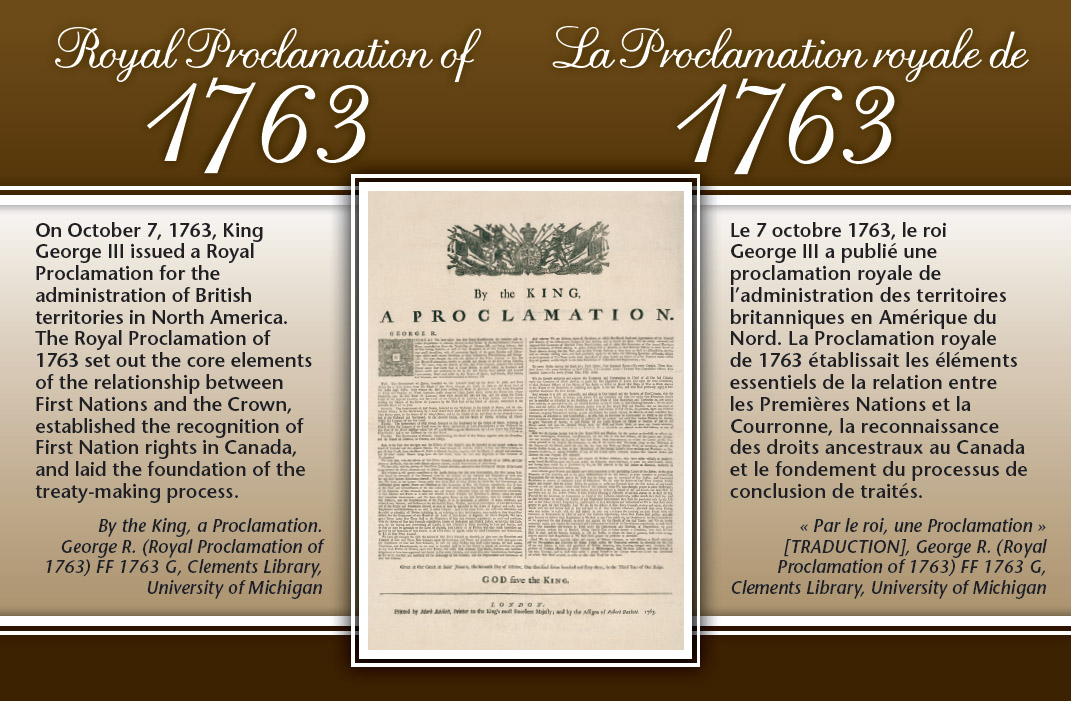Royal Proclamation of 1763: Relationships, Rights and Treaties – Poster
PDF Version (4.37 Mb, 4 Pages)
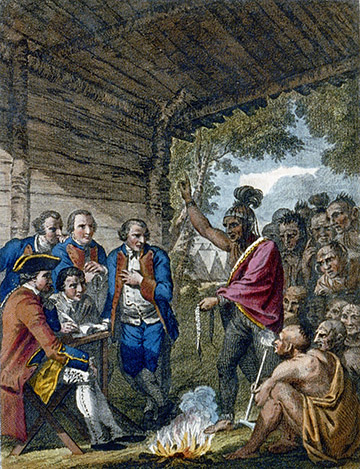
On October 7, 1763, King George III issued a Royal Proclamation for the administration of British territories in North America. The Proclamation is a foundational document marking the beginning of Canada's historic link with Great Britain and British parliamentary institutions. It was also important in establishing the core elements of the relationship between First Nation people and the Crown, recognizing First Nation rights in Canada and defining the treaty-making process that is still used.
In 2013, we commemorate the 250th anniversary of the Royal Proclamation of 1763. This is a unique opportunity to recognize an important event in Canadian history that laid the foundation for Canada's territorial evolution and the continuing treaty-making process, the struggle for the recognition of First Nation rights, and the continuing and evolving role of First Nation people in the development of Canada.

Crown–First Nation Relationship
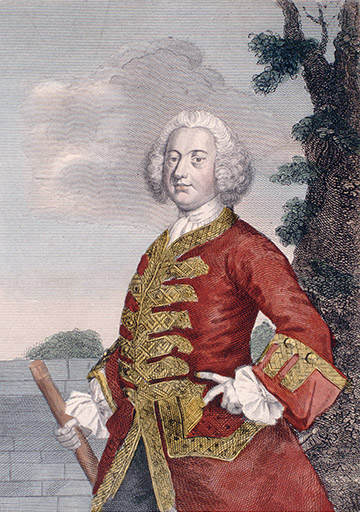
"Brothers of the Western Nations, Sachims Chiefs, & Warriors, You have now been here for several days, during which time we have frequently met to Renew, and strengthen our Engagements, & you have made so many Promises of your Friendship, and Attachment to the English that there now only remains for us to exchange the great Belt of the Covenant Chain that we may not forget our mutual Engagements.…"
News of the Royal Proclamation reached Sir William Johnson, Superintendent for Indian Affairs, in December 1763. He immediately sent word of its provisions to all of the First Nation people of the interior of North America and invited former allies to a special assembly of First Nation representatives at Fort Niagara in July 1764. At Fort Niagara, Johnson met with these First Nations, estimated to be 20,000 people, and extended the Covenant Chain to all. This offering was made to renew the relationship with First Nation allies and to form new alliances with the former allies of France.
The Establishment of Treaty-Making Process

"We do hereby strictly forbid, on Pain of Our Displeasure, all Our loving Subjects from making any Purchases or Settlements whatever, or taking Possession of any of the Lands above reserved, without Our especial Leave and Licence for that Purpose first obtained."
Since its issuance in 1763, the Royal Proclamation has served as the basis of the treaty-making process throughout Canada. The protocols and procedures it established led to the orderly opening of the lands for settlement and the establishment of an ongoing Treaty Relationship between First Nations and the Crown. It also led to the establishment of the Indian Department's primary role as intermediary between First Nation people and the Crown. After Confederation in 1867, the principles established by the Proclamation continued to guide the treaties of Western Canada and the establishment of treaty rights and obligations for all parties.
The Recognition of First Nation Rights in Canada
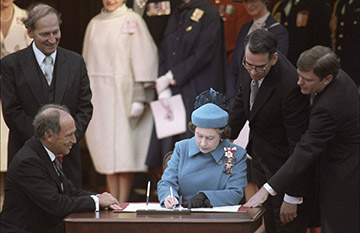
"And whereas it is just and reasonable, and essential to Our Interest and the Security of Our Colonies, that the several Nations or Tribes of Indians, with whom We are connected, and who live under Our Protection, should not be molested or disturbed in the Possession of such Parts of Our Dominions and Territories as, not having been ceded to, or purchased by Us, are reserved to them, or any of them, as their Hunting Grounds. …"
The issuance of the Royal Proclamation and the accompanying promises made at Fort Niagara in 1764 laid the foundation for a constitutional recognition and protection of First Nation rights in Canada. The Royal Proclamation itself is referred to in the Constitution Act 1982, in section 25, which states:
25. The guarantee in this Charter of certain rights and freedoms shall not be construed so as to abrogate or derogate from any aboriginal, treaty or other rights or freedoms that pertain to the aboriginal peoples of Canada including:
- any rights or freedoms that have been recognized by the Royal Proclamation of October 7, 1763; and
- any rights or freedoms that now exist by way of land claims agreements or may be so acquired.
— Constitution Act, 1982
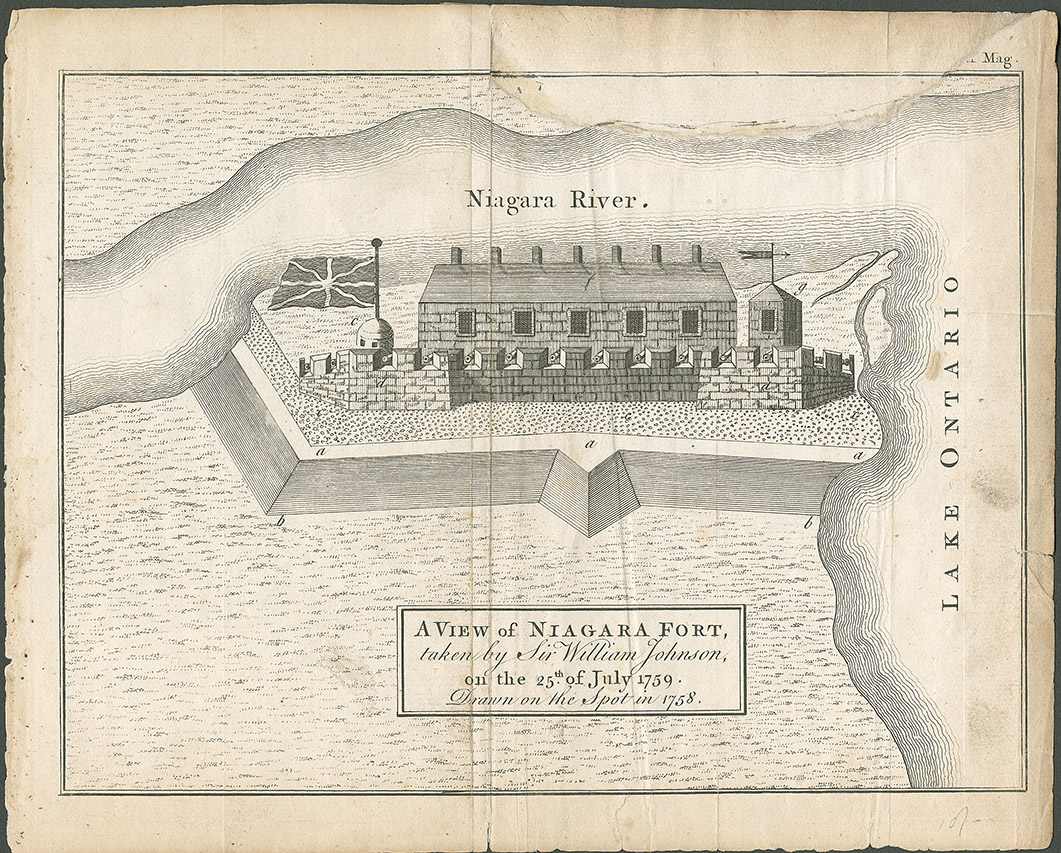
Library and Archives Canada, MIKAN no. 3723947
Royal Proclamation of 1763 – Postcard
PDF Version (535 Kb, 2 pages)
On October 7, 1763, King George III issued a Royal Proclamation for the administration of British territories in North America. The Royal Proclamation of 1763 set out the core elements of the relationship between First Nations and the Crown, established the recognition of First Nation rights in Canada, and laid the foundation of the treaty-making process.
